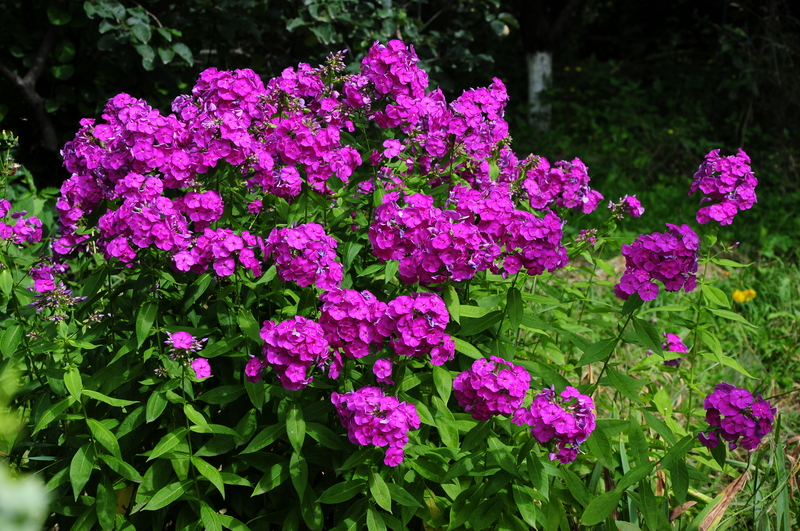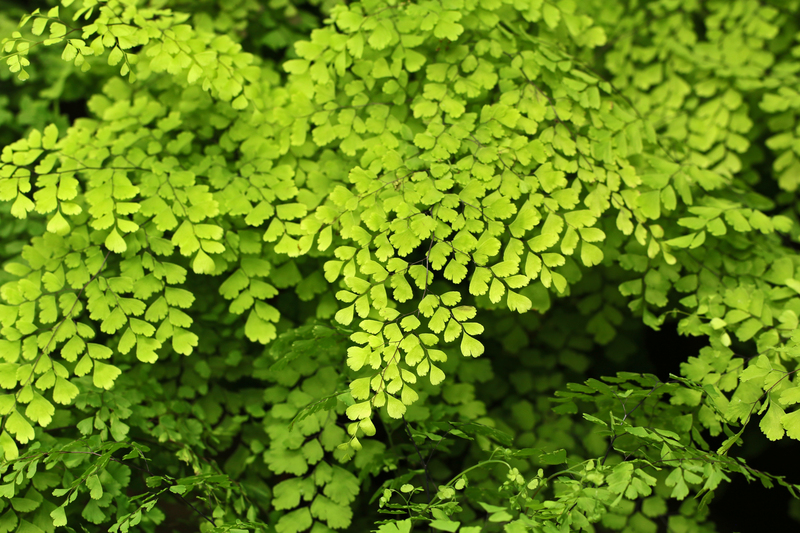Keep Your Garden Thriving: Winter Plant Protection Guide
Posted on 11/06/2025
Keep Your Garden Thriving: Winter Plant Protection Guide
Winter doesn't have to mean dull, lifeless gardens. With strategic preparation and smart techniques, you can keep your garden thriving throughout the frostiest months. This comprehensive winter plant protection guide provides essential tips and innovative strategies to safeguard your precious plants from cold snaps, frost, snow, and chilling winds. Learn how to protect your plants in winter, so they emerge healthier and more vibrant come spring.
Why Winter Plant Protection is Vital
Winter brings unique challenges for gardeners. Fluctuating temperatures, heavy snowfall, icy winds, and low sunlight can all take a toll on your plants' health. Effective winter garden protection can:
- Prevent frost damage and plant death
- Reduce the risk of diseases caused by damp, cold conditions
- Maintain soil structure and fertility for spring growth
- Preserve ornamental beauty and landscape value year-round

Understanding Which Plants Need Winter Protection
Not all garden plants are equally susceptible to winter stresses. Identifying which of your plants need the most attention is the first step in effective winter garden care.
Most Vulnerable Plants Include:
- Tender perennials: Geraniums, fuchsias, and begonias can't withstand frost and should be protected or moved indoors.
- Young shrubs and trees: Newly planted or less-established specimens have underdeveloped root systems.
- Container plants: Pots expose roots to temperature extremes and need special attention.
- Vegetables: Late-season crops such as kale, spinach, and lettuce may need row covers or cloches.
- Evergreens: Winter sun and wind can scorch leaves or cause desiccation (drying out).
Plants That Are Naturally Hardy
- Native perennials adapted to your climate
- Cold-hardy vegetables like Brussels sprouts and parsnips
- Established trees and shrubs with deep root systems
Keep in mind: Even hardy plants benefit from basic winter maintenance to help them truly thrive.
Essential Tips for Protecting Plants in Winter
Mulching: The Garden's Winter Blanket
Applying a thick layer of organic mulch around your plants is one of the most effective ways to keep your garden beds insulated during winter. Mulch helps:
- Maintain consistent soil temperature
- Limit soil moisture evaporation
- Reduce root freezing and thawing cycles
- Add nutrients as it decomposes
Cover Cropping for Soil Care
Winter cover crops like clover, rye, or vetch not only guard against erosion but also enrich the soil for spring planting. They create a living mat that protects roots, conserves soil moisture, and improves soil fertility when worked in later.
Frost Protection Strategies
Freezing temperatures can harm roots and foliage. Here's how to shield your garden from frost:
- Row covers and garden fleece: Lightweight but effective, these create a protective barrier without smothering plants.
- Cloche and cold frames: Mini-greenhouses trap heat and shield delicate crops.
- Burlap wraps: Wrap shrubs in breathable burlap to guard against windburn and heavy snow.
- Plastic sheeting: Use only in emergencies to avoid trapping moisture and causing mold.
Protecting Container Plants
Container plants are highly vulnerable because their roots are exposed to air and freeze more easily. Here's how to keep your potted plants safe:
- Move pots closer to the house for warmth
- Group containers together for mutual insulation
- Wrap pots in bubble wrap, burlap, or thick fabric for added protection
- Elevate pots on bricks to aid drainage
- If possible, bring tender plants indoors
Water Wisely in Winter
Should you water your garden in winter? The answer is yes-- but with care. Plants may need less water in winter, but winter drought is real, especially for evergreens. Water deeply during dry, mild spells when the ground isn't frozen. Avoid watering at night to prevent ice formation around roots.
Advanced Winter Plant Protection Techniques
Pruning Precautions
Some trees and shrubs benefit from selective winter pruning to remove deadwood and improve airflow. However, avoid heavy pruning late in autumn as it stimulates new growth that can be damaged by frost. Prune spring-flowering plants after they bloom, not before winter!
Dealing with Snow and Ice
Heavy snow can weigh down branches and cause breakage. Here are ways to protect your plants:
- Gently brush off heavy snow using a soft broom
- Tie up upright shrubs (like arborvitae) with soft twine before the first snow
- Avoid breaking ice off branches -- let it melt naturally to prevent damage
Windbreaks for Garden Protection
Cold winds can dry out and scorch sensitive plants. Use temporary windbreaks like fencing, burlap screens, or fences made from evergreen branches on the windward side. Strategic planting of evergreens can provide a natural windbreak for future winters.
Anti-Desiccant Sprays
Evergreens and broadleaf plants can lose moisture through their leaves in winter, leading to browning and dieback. Applying an anti-desiccant spray creates a protective coating that helps minimize water loss.
Protecting the Soil and Roots
Keeping the soil healthy is as important as shielding above-ground growth. Consider these tips:
- Avoid walking on frozen beds--compacted soil can damage roots
- Apply compost under mulch to feed beneficial soil microbes
- Rake up and remove diseased leaves to reduce overwintering pests and pathogens
Keep Your Garden Thriving: Indoor Plant and Greenhouse Care
Moving Plants Indoors
For tender perennials, potted herbs, and houseplants brought in for the winter:
- Quarantine new arrivals to avoid introducing pests
- Cut back growth and inspect for insects
- Gradually acclimatize plants to lower indoor light levels
- Avoid placing plants near cold drafts or radiators
Winter Greenhouse Tips
Greenhouses offer a year-round growing haven. For maximum success:
- Keep glass clean to maximize sunlight
- Insulate with bubble wrap or thermal screens for added warmth
- Monitor temperature and humidity--ventilate on sunny days to prevent mold
- Watch for pests like aphids and mites, which can thrive indoors
Common Mistakes to Avoid in Winter Plant Care
- Don't prune all your plants at once--know which species prefer spring or summer pruning.
- Avoid using non-breathable plastic wraps excessively as they can trap moisture and promote rot.
- Never fertilize late in autumn; it spurs tender growth that risks winterkill.
- Don't let mulch touch the stems or trunk to prevent rot and pests.
- Don't ignore pests and diseases in winter--continue to monitor and act as needed.
Winter Plant Protection Checklist
- Identify at-risk plants and plan accordingly
- Mulch all garden beds thickly
- Wrap or cover especially sensitive shrubs and trees
- Move potted plants to safe shelter or cluster for warmth
- Monitor moisture levels and water when necessary
- Clear away debris and dead foliage
- Brush off heavy snow from branches after storms
- Install temporary windbreaks if needed

Frequently Asked Questions about Winter Plant Protection
When should I start preparing my garden for winter?
Begin your winter garden prep before the first expected frost. In most regions, this is late autumn. Monitor local forecasts and stay ahead of cold snaps to ensure your plants are ready.
Is it better to cover all plants, or just the sensitive ones?
Focus on your most vulnerable plants, but remember that even hardy varieties benefit from a protective mulch layer. Prioritize new plantings, tender varieties, and container plants for additional cover.
What's the ideal mulch for winter garden protection?
Organic mulches such as straw, shredded leaves, compost, or bark chips are suitable for most gardens. Choose a mulch that's readily available in your area, and avoid using coarse materials that can harbor pests.
Can I use salt or de-icer near my garden?
No. Salt and chemical de-icers can damage plant roots and soil. Use sand or non-toxic alternatives for icy pathways adjacent to your garden beds.
How do I protect vegetables in a winter garden?
Use row covers or cold frames to shield leafy greens and root crops. Mulch root vegetables thickly, and plan a succession of cold-hardy crops for a continual winter harvest.
Conclusion: Embrace Winter with a Thriving Garden
Keeping your garden thriving in winter doesn't have to be daunting. By understanding your plants' needs and using effective protection methods such as mulching, covering, proper watering, windbreaks, and attentive soil care, your outdoor oasis can survive--and even flourish--during the coldest months. Not only will this ensure a beautiful, healthy landscape come spring, but you'll also enjoy the rewards of a hardier, more resilient garden year after year.
Start planning your winter garden protection now--your plants will thank you with lush, vigorous growth when the seasons change. For more expert tips on winter plant care and keeping your garden thriving all year round, bookmark this guide and share it with fellow garden enthusiasts!



